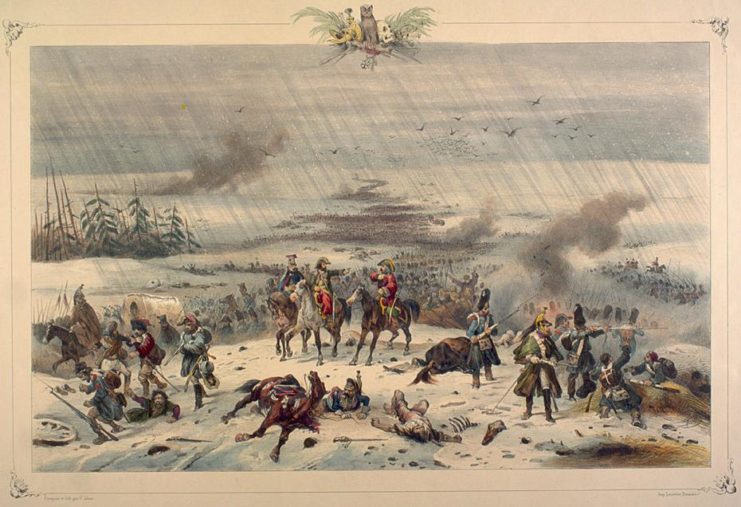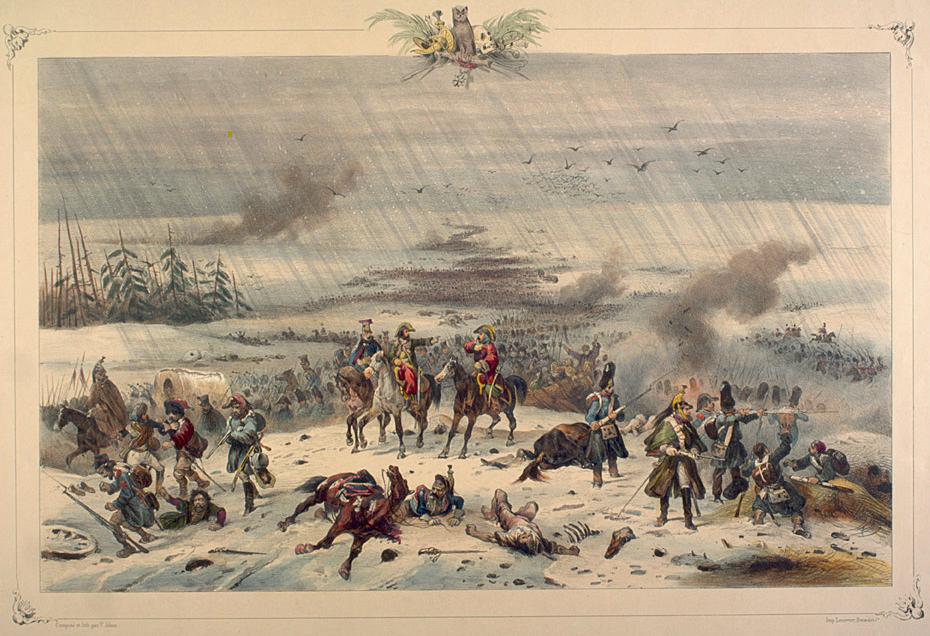On February 13th, a solemn ceremony was held in Vyazma, a small town in Smolensk, to bury the remains of Napoleonic soldiers killed during Napoleon’s retreat from Moscow during the infamous Russian Campaign.
Napoleonic Soldiers’ Remains Recovered
A combined French and Russian archaeological team led by Pierre Malinowski, from the Foundation for the Development of Russian-French Historical Initiatives, uncovered the remains of a dig in 2019.
The weather for the ceremony emulated the weather that dogged the French retreat from Russia. It was dreadful with heavy snow and frost. Representatives from the Romanov imperial house, the Murat family, and French diplomats braved the weather and attended the internment.
Despite the weather, authorities took pains to ensure that a proper ceremony was held. Cossack soldiers carried the coffins containing the remains of the 126 people as they were interred in a mass grave in a cemetery in Vyazma, about 200 kilometers from Moscow.
Approximately 100 actors dressed in period costume stood alongside an honor guard as Russia and France’s national anthems were played, and a gun salute boomed out. Both Catholic and Orthodox priests took part in the liturgy.
The coffins contained the remains of 120 soldiers, three women, and three young boys. Archeologists think the women provided medical care and meals for the troops, and the young boys acted as drummers.
A descendant of one of Napoleon’s foremost generals, Prince Joachim Murat, said that the ceremony was a “symbol of mutual respect” between the old enemies.
1812 Russian Campaign — Battle of Vyazma
Napoleon started his retreat from Moscow on October 19th, 1812, as winter set in. He knew that there was no way to maintain his 110,000-man Grande Armée outside Moscow through the brutal Russian winter.
Napoleon intended to head for Smolensk, but the road to the coast was plagued with Cossack raiders and partisan fighters, who regularly stole the food from the French supply trains and captured French troops.
This meant that the French had to retreat back along the road toward Moscow through territory already ravaged by the Grande Armée, leading to starvation for the French troops.
By the time the army reached Vyazma, the number of men had fallen to 55,000, and the troops were spread along the road for around 100 kilometers. The rear guard was harassed by attacks from Cossack troops. Napoleon grew dissatisfied with the rearguard leaders and ordered General Ney, with his III Corps, to stop in Vyazma and allow the old rearguard of I, IV, and V Corps to pass him.

On the evening of the 2nd November 1918, General Mikhail Miloradovich, with his Cossack and Army generals, noticed that the French army’s IV and V Corps had outpaced the I Corps. Recognizing the opportunity to destroy the French I Corps, led by General Louis-Nicolas Davout, he ordered an attack for the following morning. The ensuing battle was one of the entire campaign’s bloodiest and consisted of infantry, cavalry, and artillery bombardment.
The action resulted in much of the town of Vyazma being destroyed by fire. By 8:00 p.m., General Ney fought his way out of the town and retreated during the night toward the rest of the French column.
During this battle, French losses amounted to between 6,000 and 8,000 men killed or seriously injured, and 4,000 men lost as prisoners to the Russians.
Another Article From Us: British Army Put Down 1,200 Combat Dogs after They Could no Longer Serve
The Russian attack’s intensity disorganized many of the French units, which became easy targets for the Cossack cavalry, who hunted them down in the following days, resulting in more casualties for the French.
